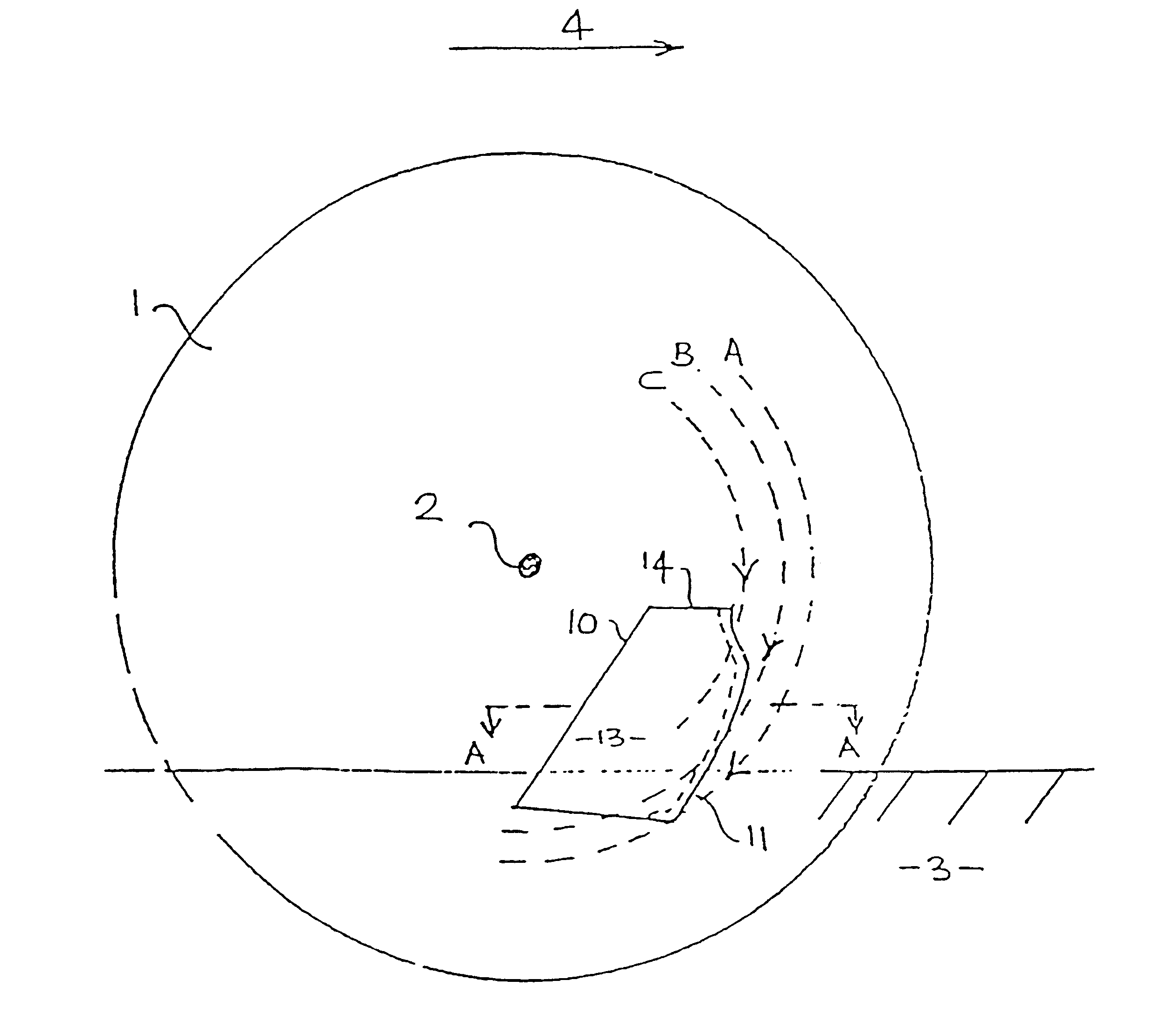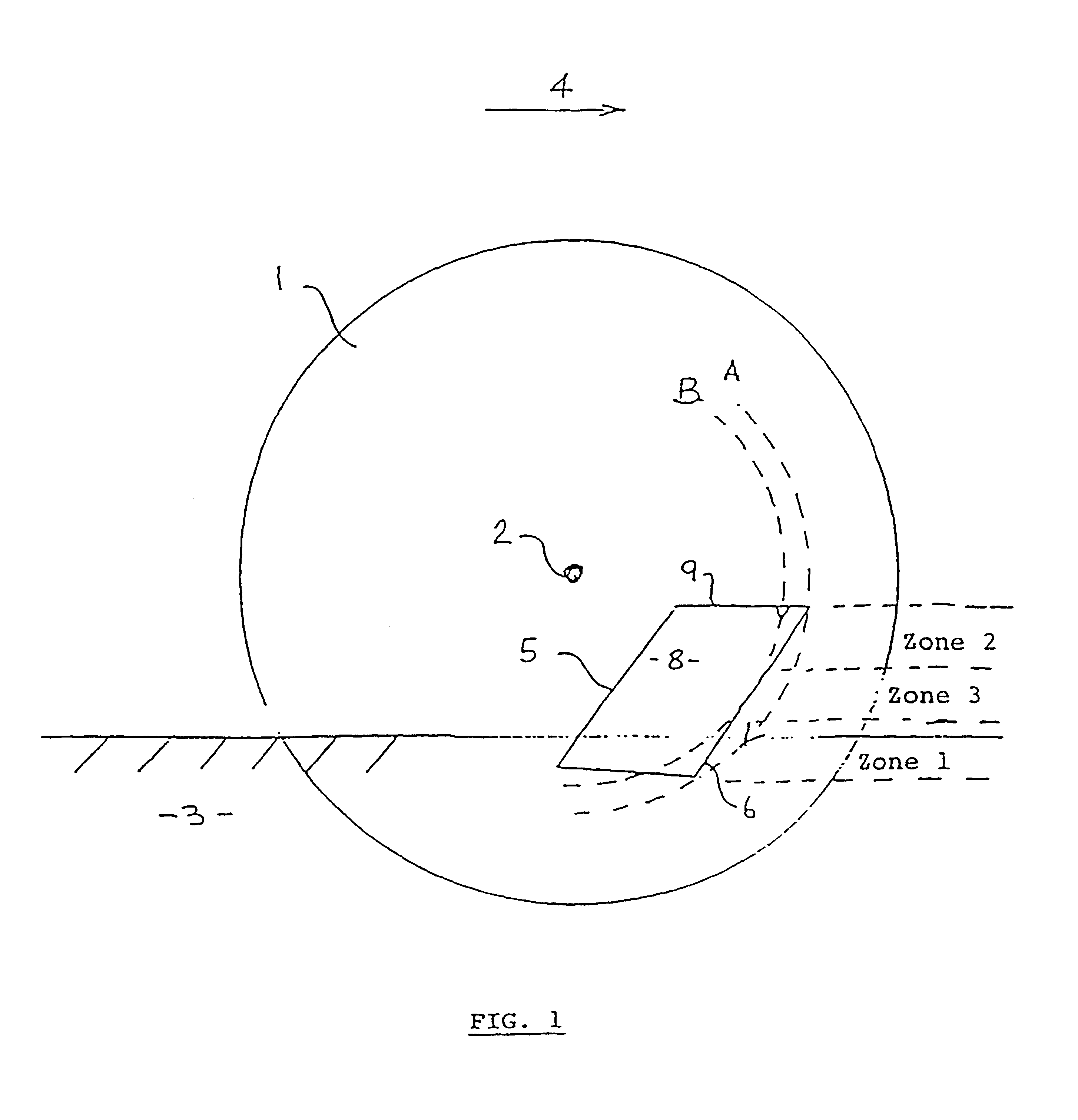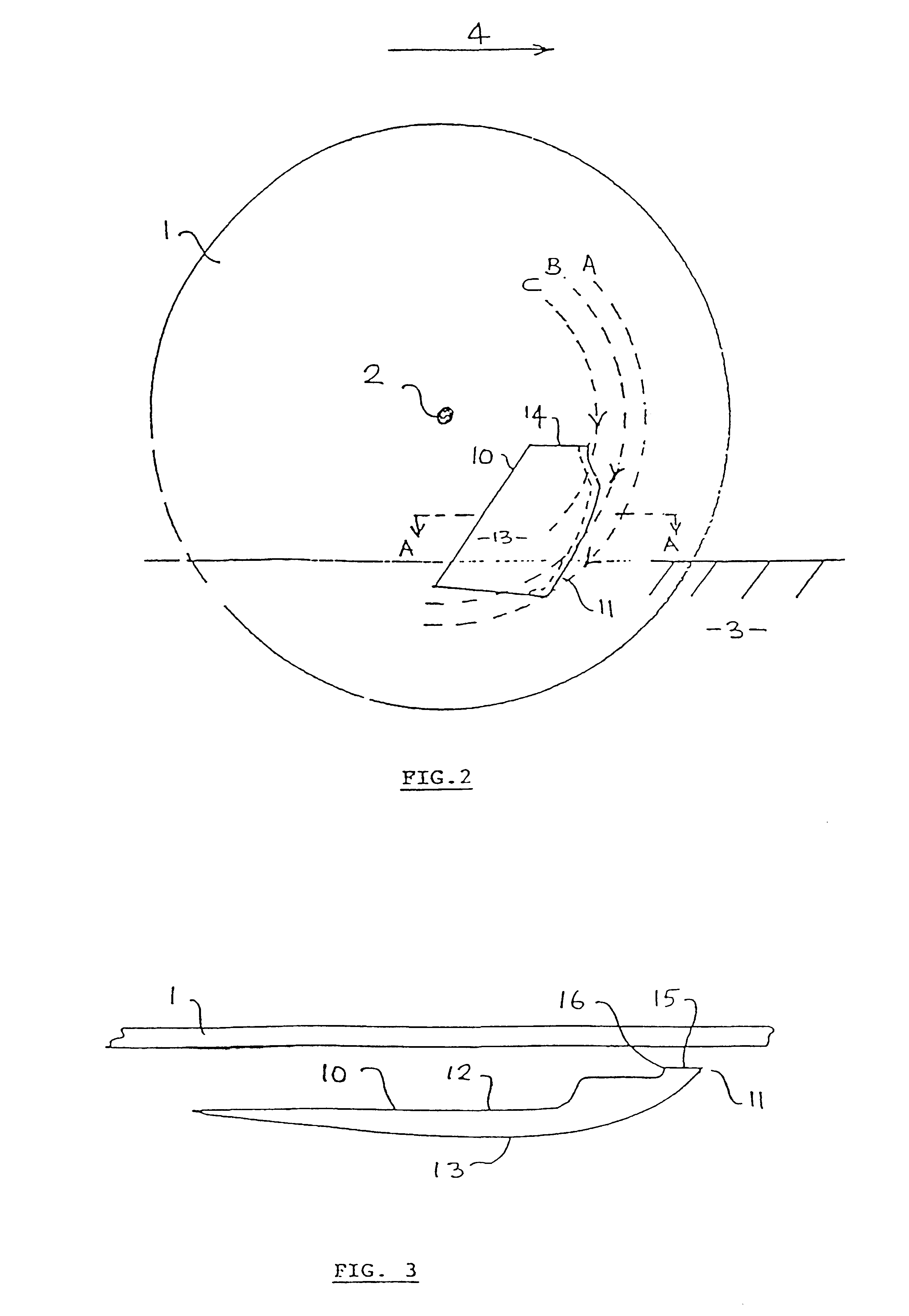Seed sowing apparatus
a technology of seed sowing apparatus and sown seed, which is applied in the direction of seeding apparatus, fertiliser and seeding device, spades, etc. it can solve the problems of reducing the separation distance and geometry between the two products sown, the edge no longer functions to deflect material to the outer periphery of the disc, and the effect of improving the contact and traction of the disc and the soil
- Summary
- Abstract
- Description
- Claims
- Application Information
AI Technical Summary
Benefits of technology
Problems solved by technology
Method used
Image
Examples
Embodiment Construction
Aspects of the present invention have been described by way of example only and it should be appreciated that modifications and additions may be made thereto without departing from the scope thereof as defined in the appended claims.
A conventional seed sowing apparatus to which the present invention is addressed is shown schematically in FIG. 1. The seed sowing apparatus comprises a flat circular disc 1 mounted on a frame so as to be rotatable about a horizontal axle 2 while partly embedded in soil 3 and drawn in a forward direction generally indicated by arrow 4 substantially parallel to the surface of the soil 3 and perpendicular to the axle 2. A blade 5 of the seed sowing apparatus includes a leading edge 6 defined by the intersection of an inner face or side surface 7 (not visible in the figure) facing the surface of the disc 1 and an outer face or side surface 8. The outer face 8 is formed as a substantially curved surface in section view such that the surface in the region of ...
PUM
 Login to View More
Login to View More Abstract
Description
Claims
Application Information
 Login to View More
Login to View More - R&D
- Intellectual Property
- Life Sciences
- Materials
- Tech Scout
- Unparalleled Data Quality
- Higher Quality Content
- 60% Fewer Hallucinations
Browse by: Latest US Patents, China's latest patents, Technical Efficacy Thesaurus, Application Domain, Technology Topic, Popular Technical Reports.
© 2025 PatSnap. All rights reserved.Legal|Privacy policy|Modern Slavery Act Transparency Statement|Sitemap|About US| Contact US: help@patsnap.com



